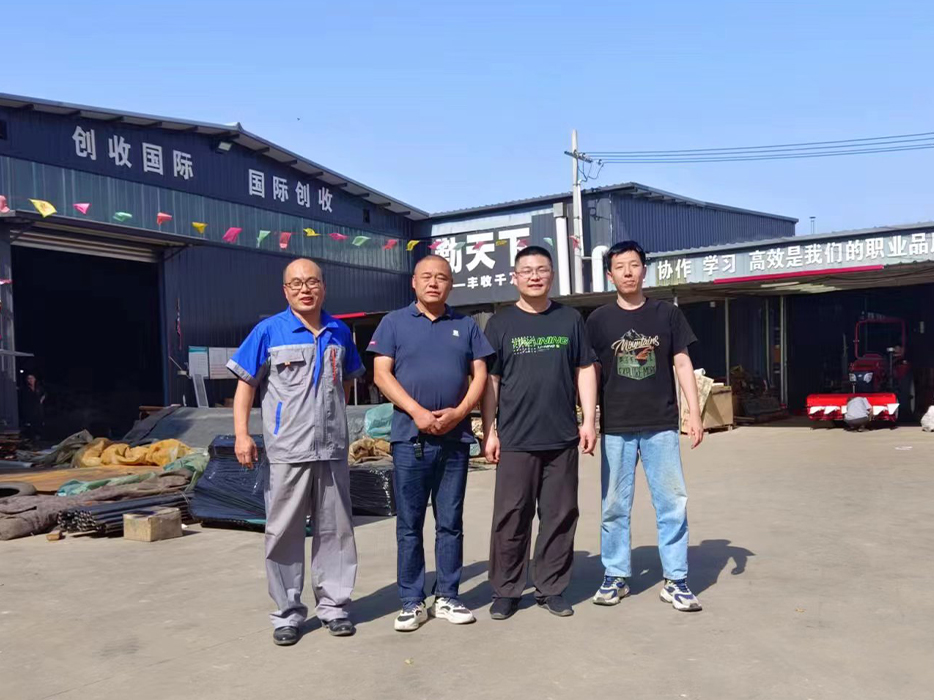small rice harvester
The Rise of Small Rice Harvesters Transforming Agriculture for Smallholder Farmers
In the world of agriculture, rice is a staple food that feeds billions across the globe. However, the methods of harvesting rice have traditionally been labor-intensive and time-consuming, particularly for smallholder farmers in developing countries. In recent years, the advent of small rice harvesters has begun to transform this landscape, making harvesting more efficient, reducing labor costs, and enhancing productivity.
The Need for Small Rice Harvesters
For smallholder farmers—typically those who cultivate less than two hectares of land—the challenges of rice harvesting are manifold. Manual harvesting, which involves cutting and bundling rice stalks by hand, is not only physically demanding but also results in significant post-harvest losses. Weather conditions can further complicate the harvesting process; delayed rains can cause crops to over-ripen or suffer damage, leading to reduced yields. In regions where labor is scarce due to urban migration, the reliance on manual harvesting becomes increasingly untenable.
Advantages of Small Rice Harvesters
The introduction of small rice harvesters addresses these challenges effectively. Characterized by their compact design and user-friendly operation, these machines are specifically engineered for the small-scale farmer. One of the primary advantages of small rice harvesters is their ability to significantly reduce harvesting time. What would traditionally take several days to complete can now be done in a matter of hours, allowing farmers to harvest at the optimal time and minimize losses.
Moreover, these machines are tailored to navigate the narrow and often uneven fields typical of smallholder farms. Unlike larger agricultural machinery, which can be cumbersome and difficult to operate in confined spaces, small rice harvesters are nimble and easily maneuverable. Their capacity to work effectively in various terrains allows farmers to utilize their equipment across different types of land, enhancing versatility.
Economic efficiency is another critical benefit. By reducing the labor required for harvesting, small rice harvesters can dramatically decrease operational costs for farmers. This newfound efficiency translates into increased profitability, enabling farmers to reinvest in their operations, buy more inputs, or even save for future uncertainties. Additionally, these harvesters are often designed to use less fuel compared to larger machines, further lowering expenses.
small rice harvester

Technological Innovations and Accessibility
Continuous advancements in technology have made small rice harvesters more accessible and affordable. Manufacturers are now focusing on creating models that utilize locally available materials and components, reducing costs and enabling easier maintenance. Furthermore, many small rice harvesters are powered by easily accessible fuel types, which makes them suitable for rural areas with limited resources.
Training programs provided by agricultural organizations also contribute to the successful integration of small harvesters into farming practices. These programs educate farmers on how to operate and maintain the machinery properly, ensuring that they can maximize the benefits of their investments.
The Broader Impact on Food Security and Sustainability
The impact of small rice harvesters extends beyond individual farmers; it holds significant promise for broader food security and sustainability goals. By enabling quicker and more efficient harvesting, these machines help stabilize local food supplies, reducing the risk of food scarcity in communities. Furthermore, with increased productivity, farmers can potentially shift towards more sustainable practices, such as crop rotation and diversified farming.
The rise of small rice harvesters also paves the way for greater agricultural innovation. As farmers become more adept at using machinery, they may be more inclined to adopt other technological advancements, such as precision farming and data analytics, further enhancing their resilience in a changing climate.
Conclusion
The emergence of small rice harvesters represents a pivotal development in the agricultural sector, particularly for smallholder farmers grappling with the challenges of traditional harvesting methods. By improving efficiency, reducing labor costs, and enhancing productivity, these machines have the potential to transform small-scale rice farming, bolstering food security and paving the way for more sustainable agricultural practices. As technology continues to evolve, the future looks promising for farmers who embrace these innovations, marking a significant step towards a more sustainable agricultural landscape worldwide.
Latest news
-
When to Upgrade Your Old Forage HarvesterNewsJun.05,2025
-
One Forage Harvester for All Your NeedsNewsJun.05,2025
-
Mastering the Grass Reaper MachineNewsJun.05,2025
-
How Small Farms Make Full Use of Wheat ReaperNewsJun.05,2025
-
Harvesting Wheat the Easy Way: Use a Mini Tractor ReaperNewsJun.05,2025
-
Growing Demand for the Mini Tractor Reaper in AsiaNewsJun.05,2025







